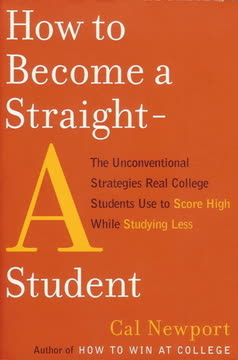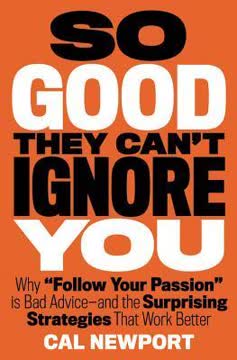Key Takeaways
1. Master time management with a simple five-minute daily system
Jot down new tasks and assignments on your list during the day; next morning, transfer these new items from your list onto your calendar; and then take a couple of minutes to plan your day.
The five-minute system. This approach involves using a calendar and a daily list. Each morning, spend a few minutes transferring items from your list to your calendar, then plan your day realistically. This system helps you:
- Keep track of all tasks and deadlines in one place
- Avoid overestimating your free time
- Maintain a clear overview of your commitments
By dedicating just five minutes each day to organizing your schedule, you can significantly reduce stress and increase productivity. The key is consistency and adapting the system to your personal needs and lifestyle.
2. Defeat procrastination through targeted strategies and self-awareness
Procrastination Battle Plan #1: Keep a work progress journal
Combat procrastination effectively. Implement these strategies to overcome the urge to delay tasks:
- Keep a work progress journal to hold yourself accountable
- Feed your brain with proper nutrition and hydration
- Make difficult tasks into events to jumpstart motivation
- Build work routines to maintain steady progress
- Choose your hard days in advance to minimize their impact
By acknowledging that the urge to procrastinate is normal, you can focus on developing strategies to work around it rather than trying to eliminate it entirely. The key is to find methods that work for you and to consistently apply them.
3. Optimize study environments and session lengths for peak performance
Identify a number of isolated study spots spread out across campus and rotate through these hidden locations when you study.
Create ideal study conditions. To maximize your productivity and focus:
- Choose quiet, isolated locations for studying
- Rotate between different study spots to maintain stimulation
- Limit study sessions to about one hour, followed by short breaks
- Schedule your most demanding work during your peak energy times
By carefully selecting when, where, and how long you study, you can significantly improve your concentration and retention of material. Remember that everyone's optimal conditions may vary, so experiment to find what works best for you.
4. Take strategic notes to capture key concepts efficiently
In nontechnical courses, capture the big ideas by taking notes in the question/evidence/conclusion format.
Develop effective note-taking strategies. Tailor your approach based on the course type:
For nontechnical courses:
- Use the question/evidence/conclusion format
- Focus on capturing big ideas rather than every detail
- Utilize formatting to emphasize important points
For technical courses:
- Record as many sample problems and solutions as possible
- Prioritize problem statements and answers over intermediate steps
- Ask questions when confused and mark unclear areas for later review
By adopting these strategies, you'll create more useful and organized notes that will significantly reduce your study time later.
5. Prioritize assignments and readings based on importance
Doing all of your reading in college is a luxury most of us can't afford—especially if you're involved in extracurriculars.
Strategically manage your workload. To handle the volume of assignments efficiently:
- Identify and prioritize "favored sources" that provide core information
- Use the importance hierarchy for supplemental readings:
- Readings that make an argument
- Readings that describe events or people
- Readings that only provide context
- Take smart notes on favored reading assignments using the question/evidence/conclusion format
- For problem sets, work consistently and collaborate with classmates when allowed
By prioritizing your work and focusing on the most important materials, you can maintain good grades without sacrificing your entire social life or extracurricular activities.
6. Prepare for exams using the quiz-and-recall method
If you can close your eyes and articulate an argument from scratch, or stare at a blank sheet of paper and reproduce a solution without a mistake, then you have fully imprinted that concept.
Master the quiz-and-recall method. This efficient study technique involves:
- Creating practice quizzes from your notes and study materials
- Attempting to answer each question out loud or in writing
- Reviewing and correcting your answers
- Repeating the process, focusing on areas that gave you trouble
For technical courses:
- Solve sample problems and explain concepts aloud
- Use practice exams when available
This method ensures active engagement with the material and helps identify areas that need more attention. It's more effective than passive review and helps you internalize concepts more deeply.
7. Craft standout papers by breaking the process into manageable steps
A common complaint I hear from students is that they never seem to have enough time to finish all of their work.
Approach paper writing systematically. Break the process into these steps:
- Choose an interesting topic within the assignment parameters
- Develop a targeted thesis through initial research
- Seek feedback on your thesis from your professor
- Conduct thorough, organized research
- Create a detailed outline of your argument
- Get feedback on your outline from peers and professors
- Write your paper, focusing on clear communication of your argument
- Edit your work carefully
By separating these components, you make the paper-writing process less overwhelming and more efficient. This approach allows you to focus on each aspect individually, resulting in a higher-quality final product.
8. Edit papers effectively without fixating on perfection
You can edit a paper forever and still not be satisfied. So it's important to know when to just print the damn thing out and send it off to its fate.
Implement a three-pass editing system. To effectively polish your paper without overediting:
-
Argument Adjustment Pass:
- Focus on the presentation and structure of your arguments
- Make major edits to improve clarity and flow
-
Out Loud Pass:
- Print your paper and read it aloud
- Mark grammatical errors and awkward phrasing
- Make corrections based on your markings
-
Sanity Pass:
- Quickly review a printed copy for any remaining errors
- Use this final read-through to gain closure on your work
This system helps you balance thorough editing with efficient use of time, ensuring that your paper is polished without becoming obsessive about minor details.
Last updated:
FAQ
What's "How to Become a Straight-A Student" about?
- Author and Focus: Written by Cal Newport, the book provides unconventional strategies used by real college students to achieve high grades while studying less.
- Research-Based Advice: The advice is based on interviews with top-scoring undergraduates from prestigious universities, focusing on efficient study habits rather than excessive study hours.
- Practical Techniques: It offers practical techniques for time management, exam preparation, and paper writing, aiming to help students balance academics with social life.
- Target Audience: The book is intended for college students looking to improve their grades without sacrificing their well-being or social activities.
Why should I read "How to Become a Straight-A Student"?
- Efficiency Over Effort: The book emphasizes studying smarter, not harder, which can save time and reduce stress.
- Real-World Examples: It includes strategies from successful students, making the advice relatable and applicable to real college scenarios.
- Comprehensive Approach: Covers various aspects of college life, including time management, exam preparation, and paper writing, providing a holistic approach to academic success.
- Balance and Well-being: Encourages maintaining a balanced lifestyle, ensuring students can enjoy college life while excelling academically.
What are the key takeaways of "How to Become a Straight-A Student"?
- Time Management: Implement a simple, five-minute daily planning system to manage tasks and deadlines effectively.
- Avoid Procrastination: Use specific strategies to combat procrastination, such as keeping a work progress journal and creating routines.
- Study Techniques: Focus on high-intensity, short study sessions rather than long, low-intensity marathons to maximize learning.
- Paper Writing: Break down the paper-writing process into manageable steps, from topic selection to final editing, to reduce stress and improve quality.
What are the best quotes from "How to Become a Straight-A Student" and what do they mean?
- "Efficiency. The simple truth is that the brute force techniques used by most students are incredibly inefficient." This quote highlights the book's core message that smarter study techniques can lead to better results with less effort.
- "Pseudo-work features a very low intensity of focus. Therefore, to accomplish something by pseudo-working, you need to spend a lot of time." It emphasizes the importance of focused, high-intensity study sessions over long, unfocused ones.
- "A little organization goes a hell of a long way." This underscores the book's advocacy for simple, effective time management strategies to reduce stress and improve academic performance.
- "The key to improving your grades without becoming a grind cannot be found in any single study habit." It suggests that success comes from a combination of strategies tailored to individual needs and circumstances.
How does Cal Newport suggest managing time in "How to Become a Straight-A Student"?
- Daily Planning: Spend five minutes each morning updating your calendar and planning your day, focusing on realistic time frames for tasks.
- Task Prioritization: Label tasks with specific time slots to avoid overestimating free time and ensure all obligations are met.
- Flexibility: Allow for adjustments throughout the day to accommodate unexpected events while maintaining productivity.
- Minimal Effort: The system is designed to be lightweight and easy to restart after periods of neglect, making it sustainable for busy students.
What strategies does Cal Newport recommend for avoiding procrastination in "How to Become a Straight-A Student"?
- Work Progress Journal: Keep a daily record of tasks and accomplishments to hold yourself accountable and reduce procrastination.
- Energy Management: Maintain high energy levels by staying hydrated, monitoring caffeine intake, and eating healthy snacks.
- Task Routines: Establish consistent times for specific tasks each week to build productive habits and reduce decision fatigue.
- Hard Days Planning: Schedule intense workdays in advance to manage workload effectively and prevent last-minute stress.
What study techniques are highlighted in "How to Become a Straight-A Student"?
- Quiz-and-Recall Method: Actively recall and articulate concepts in your own words to reinforce learning and improve retention.
- Focused Study Sessions: Limit study periods to one hour with regular breaks to maintain high intensity and avoid fatigue.
- Isolation for Concentration: Choose isolated study spots to minimize distractions and enhance focus during study sessions.
- Efficient Note-Taking: Use a question/evidence/conclusion format for nontechnical courses and prioritize sample problems in technical courses.
How does Cal Newport suggest handling reading assignments in "How to Become a Straight-A Student"?
- Selective Reading: Focus on favored sources and use an importance hierarchy to determine which supplemental readings to skim or skip.
- Efficient Note-Taking: Take notes in a question/evidence/conclusion format to capture big ideas without excessive detail.
- Constant Work: Spread reading assignments over several days to avoid last-minute cramming and improve comprehension.
- Group Work: Collaborate with classmates on problem sets to enhance understanding and reduce individual workload.
What is the "quiz-and-recall" method in "How to Become a Straight-A Student"?
- Active Recall: After reviewing material, try to explain it unaided in your own words to ensure deep understanding and retention.
- Practice Quizzes: Create quizzes from your notes and attempt to answer them without looking, focusing on areas of difficulty.
- Iterative Process: Repeat the quiz-and-recall process until you can answer all questions confidently, minimizing wasted study time.
- Efficiency: This method targets weak areas and reinforces learning, making it more effective than passive review techniques.
How does Cal Newport recommend writing papers in "How to Become a Straight-A Student"?
- Separate Components: Break down the writing process into distinct steps: topic selection, thesis development, research, and writing.
- Detailed Outlines: Create a topic-level outline with supporting quotes to guide writing and ensure a coherent argument.
- Consult Experts: Seek feedback from professors and peers on your outline to refine your argument before writing.
- Efficient Editing: Use a three-pass editing process to polish your paper without fixating on endless revisions.
What is the importance of "academic disaster insurance" in "How to Become a Straight-A Student"?
- Eliminate Uncertainty: Address unclear topics as they arise to prevent gaps in understanding that could lead to exam surprises.
- Proactive Approach: Use class time, office hours, and peer discussions to clarify confusing concepts before exams.
- Minimize Last-Minute Stress: By resolving uncertainties early, you reduce the need for extensive last-minute studying.
- Confidence Boost: Enter exams with a comprehensive understanding of all topics, increasing confidence and performance.
How does "How to Become a Straight-A Student" suggest balancing academics and social life?
- Efficient Study Habits: Implement strategies that reduce study time, freeing up hours for social activities and relaxation.
- Prioritize Well-being: Emphasize the importance of sleep, exercise, and social interactions to maintain mental and physical health.
- Flexible Scheduling: Use a dynamic time management system to accommodate both academic and social commitments.
- Holistic Approach: Recognize that a balanced lifestyle contributes to academic success and overall happiness, as advocated by the book.
Review Summary
How to Become a Straight-A Student receives mixed reviews. Many praise its practical advice on time management, note-taking, and exam preparation. Readers appreciate the real-life examples from successful students and find the strategies applicable beyond academics. Some criticize the book for being outdated or not addressing technical subjects adequately. While many found it helpful for improving study habits and grades, others felt the advice was common sense or not universally applicable. Overall, the book is seen as potentially beneficial for students seeking to enhance their academic performance.
Similar Books

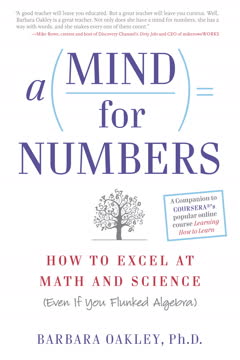
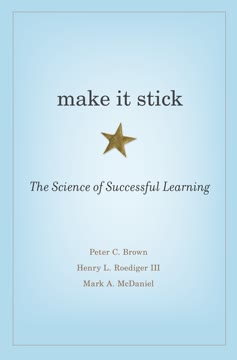


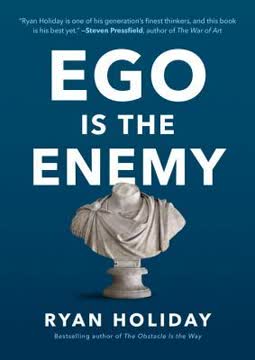



Download PDF
Download EPUB
.epub digital book format is ideal for reading ebooks on phones, tablets, and e-readers.
